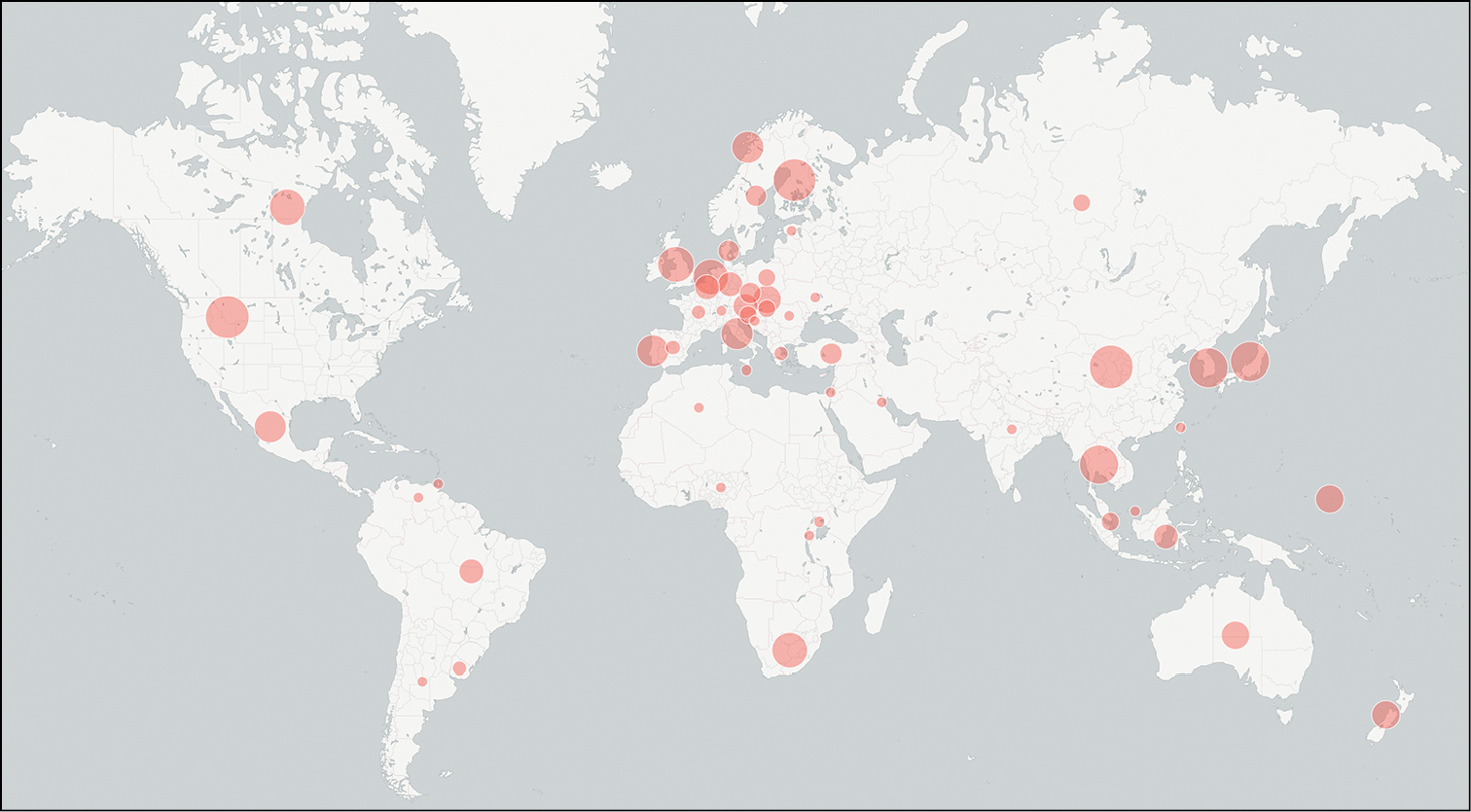
|
||
|
Analysis of the BMS sequences for country of collection. Country centroids marked with bubbles of different size on the global map indicate the number of BMS sequences originating from these countries (54 distinct countries, sequence count ranging from 1 to 2,914). For an additional 2.9% of the sequences, country information could not be restored during the workshop. The figure includes pre-existing data plus the data added during the workshop, such that these charts indicate the scientific state of ITS-based Sanger-derived sequencing of the built mycobiome as of spring 2016. Sequences that were not annotated with a single built environment-related term in the INSDC were not included in this effort, and are not represented in these charts. |